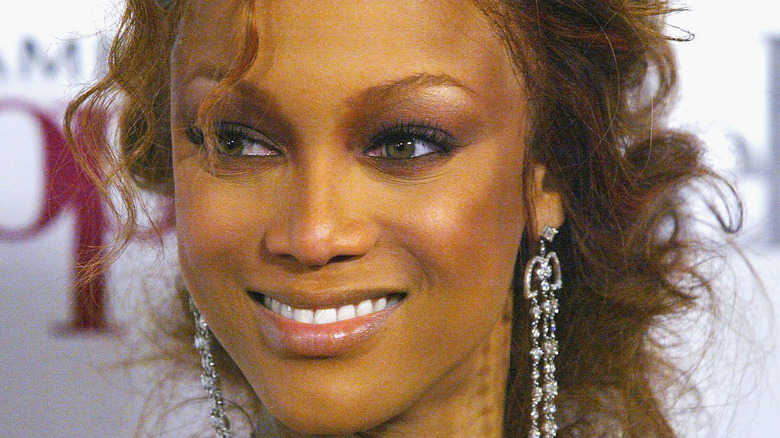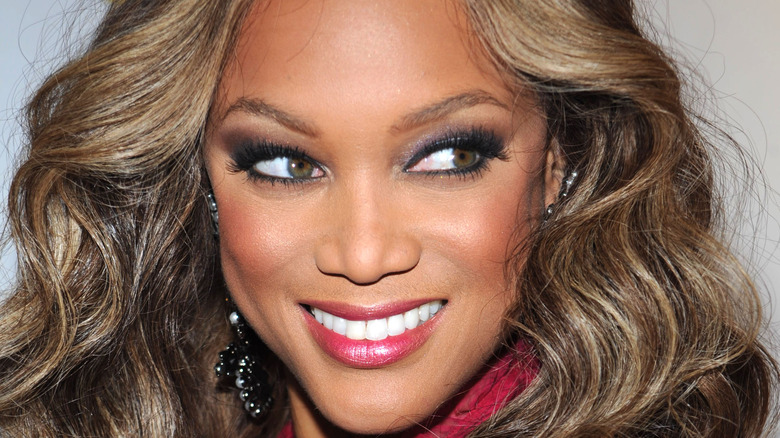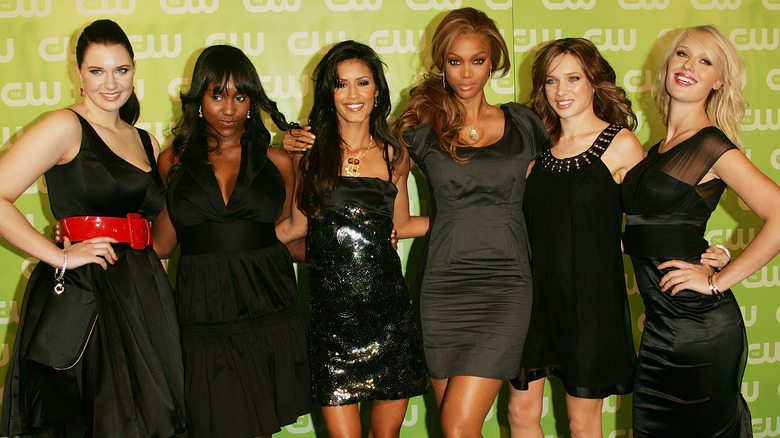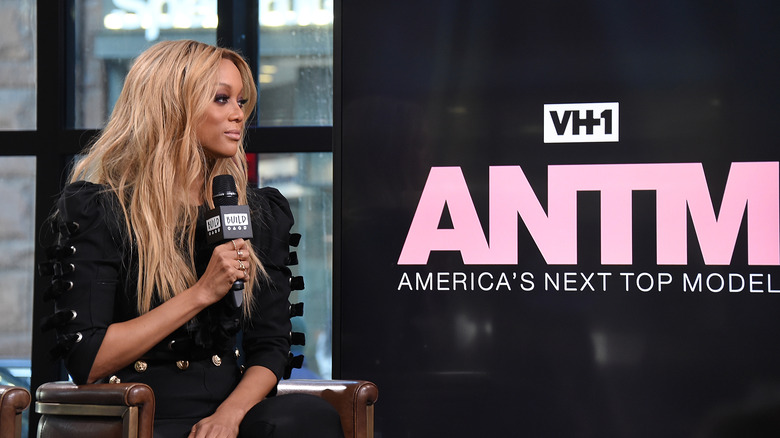These America's Next Top Model Challenges Would Never Happen Today
"America's Next Top Model" was an undeniable moment in reality competition history. Season after season, we watching model hopefuls endure drama and compete in challenges to prove they had what it would take to take on the modeling industry. Tyra Banks was the perfect host for the high-energy, diva-packed series, which ran from 2003 to 2018 (per IMDb). While iterations of ANTM have come and go, some remember just how out-there the early seasons of the show was.
Recently, it's come up that the show was pretty problematic in its heyday. Banks herself has acknowledged the show hasn't aged well. "Been seeing the posts about the insensitivity of some past ANTM moments and I agree with you," she tweeted in May 2020. "Looking back, those were some really off choices. Appreciate your honest feedback and am sending so much love and virtual hugs."
Certainly, there are a number of major ANTM moments that would not fly in 2021, from challenges to the treatment of the prospective models and more.
One challenge asked models to dress as a different race than their own
Cycle 4 of "America's Next Top Model" featured one of the challenges that most people recall when discussing ANTM's complicated history. The 2005 cycle included a challenge that saw models competing for a "Got Milk?" ad spot. The models were challenged to be made up and dressed as members of different races and ethnicities to their own. Tyra Banks even told one of the white models that a photo where she's holding a child reminded Banks of a photo of herself and her own mother (per MEL Magazine).
It's a moment judge Jay Manuel recalled being uncomfortable with in his memoir "The Wig, The Bitch & The Meltdown." He talked about it with in an interview with Variety in May 2020. "I do remember, and it was very uncomfortable for me, in Cycle 4, it was a photoshoot where the girls had to swap races. I was so, so, so uncomfortable with this," he recalled.
"I was never scripted for my intros or anything, and I didn't know how I was going to be able to set this up — I was so afraid that I would wear this because I was the creative director, but it was not my idea. That swapped race was a layer added in. It was supposed to be a different concept. I remember that very, very clearly. I was basically told that I had to execute the creative, and it made me very uncomfortable."
Contestants were asked to overcome recent traumas around death
Some challenges on "America's Next Top Model" were a little dark. In cycle 4, models were asked to pose in open caskets in an 8-foot deep grave. That could be a little alarming for any model, for someone who recently experienced a loss, it could be traumatizing.
Such was the case for Kahlen Rondot, who was asked to compete in that challenge the same week she learned her best friend had died (per BuzzFeed). Rondot was offered the chance to skip the shoot, but judges said it would be held against her when considering who would be sent home that week, so she went ahead with it.
In cycle 8, Jael Strauss found out that her best friend had died of a drug overdose. In the next week's challenge, she was asked to pose as a crime scene victim, playing dead while looking alive. Strauss won the challenge despite how recently she'd had an unsettling experience with death.
They were insensitive to disabled models
In two different cycles, judges seemed insensitive to disabled models. Cycle 3 featured Amanda Swafford, who was legally blind (per Revelist). During a challenge, they were walking a dimly lit runway in the dark.
Swafford inquired about whether she could see the runway ahead of time to prepare herself. She was shot down, saying it would give her an unfair advantage. "I mean I understand they didn't want me to have an unfair advantage, but I'm just trying to get up to the same playing field as everybody else," she later said. Luckily, glitter made it easier for her to navigate the situation.
A similar situation arose during cycle 22, when deaf model Nyle DiMarco had to model in the dark. The models were posing outdoors with just flashlights to guide them. Many believed DiMarco downplayed the disadvantage it posed him, saying he didn't think "it was going to be that big of a deal."



